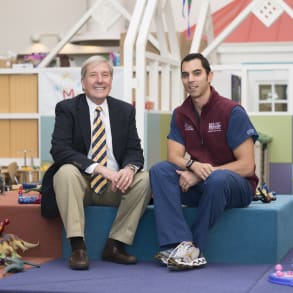Ramin M. Eskandari, M.D., walks through the spinal cord repair surgery for a patient with Myelomeningocele, starting with detethering the spinal cord and laminoplasty and ending with the resection of the epidermoid cyst.
Related Presenters

EducationWayne State University School of Medicine ResidencyUniversity of Utah FellowshipStanford University SpecialtiesPediatric Neurosurgery Clinical InterestsHydrocephalusBrain tumors in childrenSpine abnormalitiesCraniosynostosisEpilepsy surgery